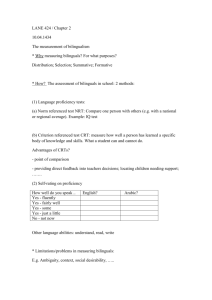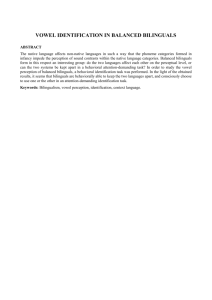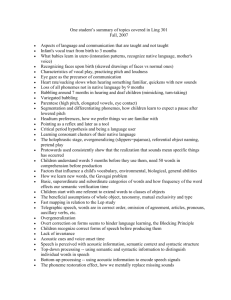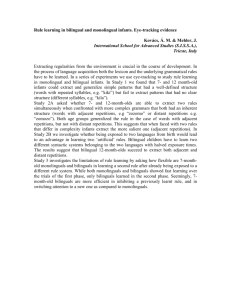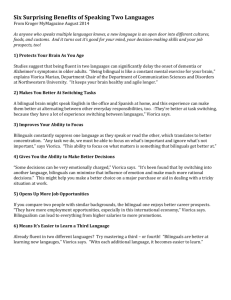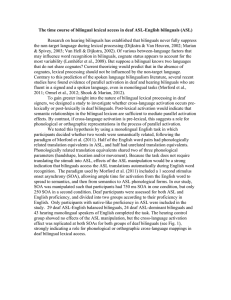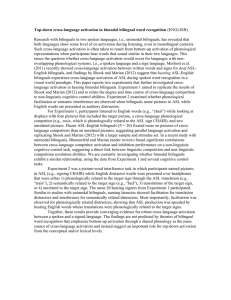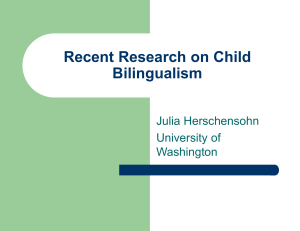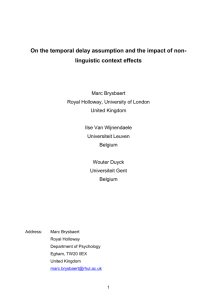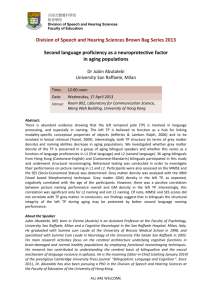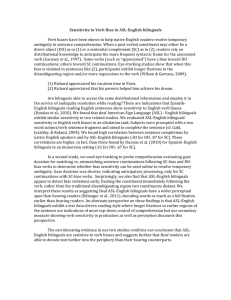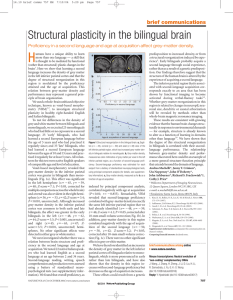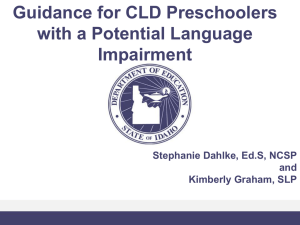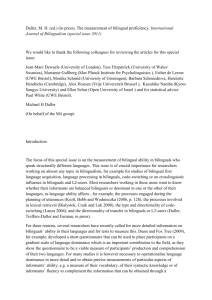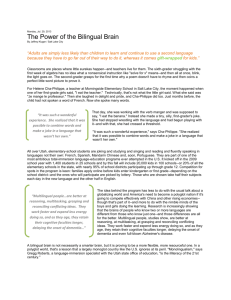06 Emma Salja Bilingual Paper presentation
advertisement
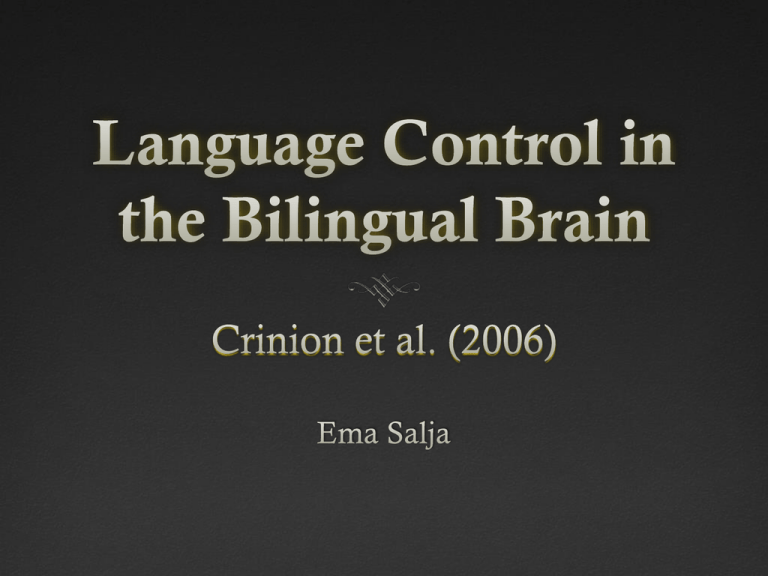
Background Bilinguals can voluntarily control which language is used Distinguish language heard/read Which language speech is to be produced in Inhibition of non-selected language Proficient bilinguals activate same brain regions regardless of which language presented or produced (Abutalebi, & Perani, 2005). Neural circuits for different languages are overlapping/ interconnected but don’t indicate how brain controls language in use Question & Hypothesis What brain areas are responsible for language control? DV: brain activation (fMRI & PET) IV: Language of target Target & prime semantics Target & prime language Hypothesis? They didn’t really have one… Methods Subjects (German-English & Japanese-English bilinguals)visually shown pairs of words (i.e. troutSALMON) in sequence Language Pairs semantically similar/different Target and prime were in same/different language Ignore first word (prime) & make decision based on meaning of second word (target) Time between prime & target optimized for priming, but not long enough to predict target (250 ms) Task presented while subjects being scanned (fMRI & PET) No significant effect of target language on accuracy Results Some variance in visual cortex activation Semantic priming in left ventral anterior temporal lobe is languageindependent Language-dependent semantic priming only in left caudate (LC) Reduced activation when semantically similar prime & target in same language Discussion Suggest that LC plays a role in sensing change in language OR word semantics LC seems to function for language control Neuropsychological study on particular trilingual patient with white matter lesions around LC Retained comprehension in all 3 Involuntarily switched between languages during production tasks Limitations & Next Step Limitations Characters/word varied between languages Sample size/bilingual group (~ 10-15) Tested only GermanEnglish & JapaneseEnglish bilinguals Next Step Determine adjacent & connecting pathways Test other bilingual groups Check effect of varying proficiencies (one language more dominant then other) Final Note Strengths Weaknesses Interesting Topic Difficult to read Tested bilinguals from completely separate linguistic families No clear question, hypothesis or variables Equivalent linguistic proficiencies Not enough information or detail regarding subjects & procedures References Abutalebi, J., & Perani, D. (2005). the neural basis of first and second language processing. Current Opinion in Neurobiology, 15, 202-206. Aso, T., Crinion, J., Fukuyama, H., Green, D. W., Grogan, A., Hanakawa, T.,…Urayama, S. (2006). Language control in the bilingual brain. Science, 312, 1537-1540. doi: 10.1126/science.1127761.
